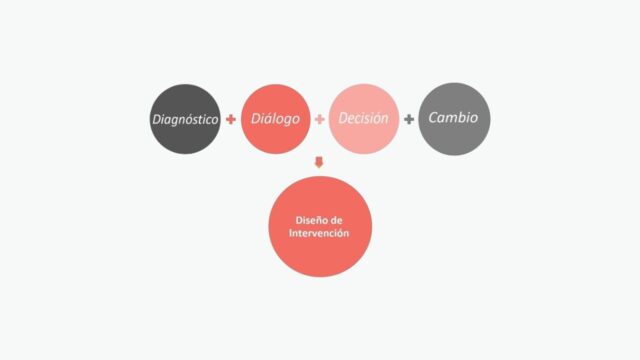
Managing in the face of complexity (part 1): Introduction
This article is part 1 of a series of articles featuring the ODI Working Paper A guide to managing in the face of complexity.
The challenges to economic, social and political development are complex and unpredictable1. To respond to these challenges, governments, NGOs and international development agencies need to rely less on rigid implementation structures built on pre-chosen outputs and targets. Instead they need to manage policies, programmes and projects in more flexible and adaptive styles that take account of new threats, opportunities and the lessons learned during implementation. How then can development interventions be steered towards intended goals? Is it possible – and feasible – to manage interventions faced with so many influences and uncertainties?
This … [series] is a guide to how interventions can be managed in the face of complexity. The … [series] builds on academic, policy and programmatic literature related to themes around systems and complexity (such as an in-depth study by Jones, 2011, which synthesises much of the material), and draws on the authors’ experience of advising development agencies and governments in both developed and developing countries. To understand the way we use the term ‘complexity’ throughout the … [series], please see Box 1.
First, this … [series] describes the features of complex situations, and explains why they pose a challenge for traditional management approaches. This should give the reader the necessary tools to assess whether and in what way they are facing a complex situation (and, therefore, whether the guide is relevant for them). Second, it outlines key principles for managing in the face of complexity. This should help the reader understand how management needs to differ from more traditional approaches when confronted with complex issues. Third, the … [series] provides examples of approaches that have been used for managing in situations of complexity. This should give the reader a deeper understanding of the principles involved, and practical illustrations of how they can be applied.
For the purpose of this … [series] we understand ‘management’ as the process of translating plans into action (for making plans, see ‘A guide to planning and strategy development in the face of complexity’, 2013). This encompasses defining and structuring activities, organising resources (including staffing), determining the division of work and responsibilities (including for decision-making) and specifying information needs and communication flows. We also highlight leadership tasks throughout the … [series], which are usually seen as being complimentary to management: while a manager assures that things are done rightly, a leader’s job is to inspire and motivate, seeing that the right things are done2. Yet nowadays management and leadership are not easily separated and in development work in particular the same people act as both leader and manager (perhaps at different points in time).
Box 1: Defining the challenges of complexity
There are a number of different definitions of ‘complexity’, but there is considerable consensus about the challenges that complexity poses for policy and programming. A common approach3,4,5 argues that a situation is:
- Simple when the core features are known to all actors and there is a high degree of agreement among them about what needs to be done. The relationships between an action and its consequences are known and predictable.
- Complicated when the core features are not necessarily known to those within the situation, and there is some disagreement about the nature of the situation and what needs to be done (e.g. different theories of change). The relationship between an action and its consequences is knowable by bringing in relevant expertise, although not fully predictable.
- Complex when many features of a situation are unknown, and there is not only considerable disagreement about the nature of the situation and what needs to be done, but also about what is happening and why. The relationship between an action and its consequences is unknowable beforehand, depending considerably on context.
The twin challenges of certainty (how much we know about a situation) and agreement (to what extent we agree on what needs to be done) run through these definitions. For the purposes of this … [series] we separate them as they pose different types of challenge for programming (as can be seen … [in the subsequent articles]).
We also add a third parameter, distributed capacities, or how the skills, resources and actions needed to achieve a change are spread between different agencies or organisations. This represents a strong theme in the work on systems theory, complex adaptive systems and elsewhere. While some work assumes the distribution of capacities is a product of the other two dimensions, this work tends to come from European and North American contexts. It is not only conceptually distinct, but also it seems likely that configurations of actors and institutions in developing countries may be quite different. Assessing the level of distribution is particularly relevant for development problems where e.g. formal institutions may be relatively weak and interventions frequently rely on large and often ‘messy’ partnerships6 in order to succeed.
Next part (part 2.1): Identifying the nature, level and challenges of complexity.
See also these related series:
- Exploring the science of complexity
- Planning and strategy development in the face of complexity
- Taking responsibility for complexity.
Article source: Hummelbrunner, R. and Jones, H. (2013). A guide to managing in the face of complexity. London: ODI. (https://www.odi.org/sites/odi.org.uk/files/odi-assets/publications-opinion-files/8662.pdf). Republished under CC BY-NC-ND 4.0 in accordance with the Terms and conditions of the ODI website.
Header image source: pxhere, Public Domain.
References:
- Ramalingam, B. and Jones, H., with Reba, T. and Young, J. (2008). Exploring the Science of Complexity: Ideas and Implications for Development and Humanitarian Work. Working Paper 285. London: Overseas Development Institute. ↩
- Drucker, P.F. (2001). The Essential Drucker, Collins Business Essentials. New York: Collins. ↩
- Stacey, Ralph D. (1993). Strategic Management and Organizational Dynamics. London: Pitman. ↩
- Kurtz, C.F. and Snowden, D. (2003). ‘The New Dynamics of Strategy: Sense-making in a Complex and Complicated World.’ IBM Systems Journal, 42(3): 462-483. ↩
- Rogers, P. (2008) ‘Using Programme Theory to Evaluate Complicated and Complex Aspects of Interventions.’ Evaluation, 14(1): 29-48. ↩
- Guijt, I. (2008). Seeking Surprise: Rethinking monitoring for collective learning in rural resource management. Published PhD Thesis. Wageningen University, Wageningen, The Netherlands. ↩





